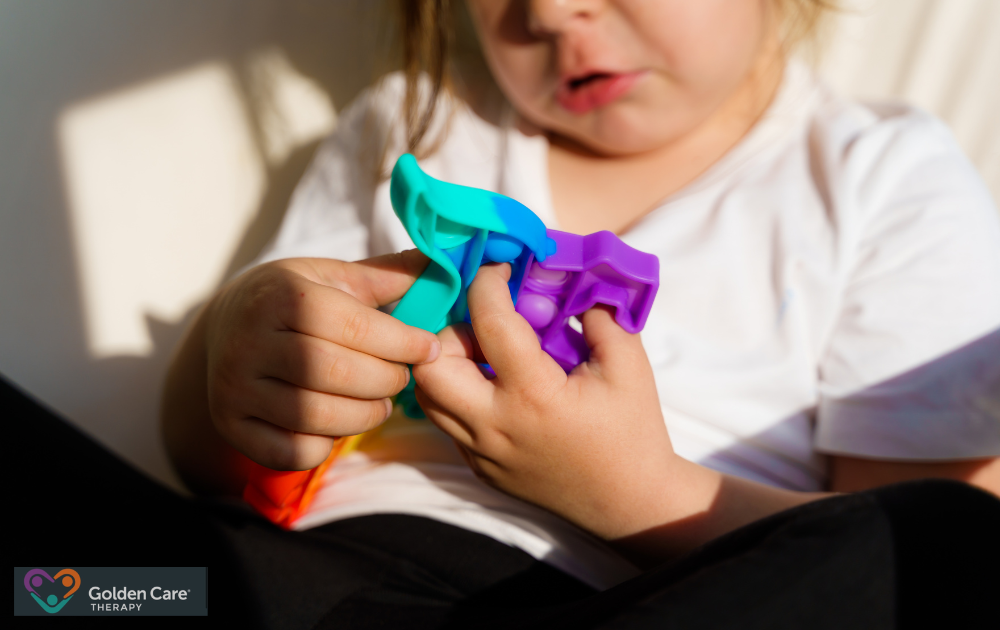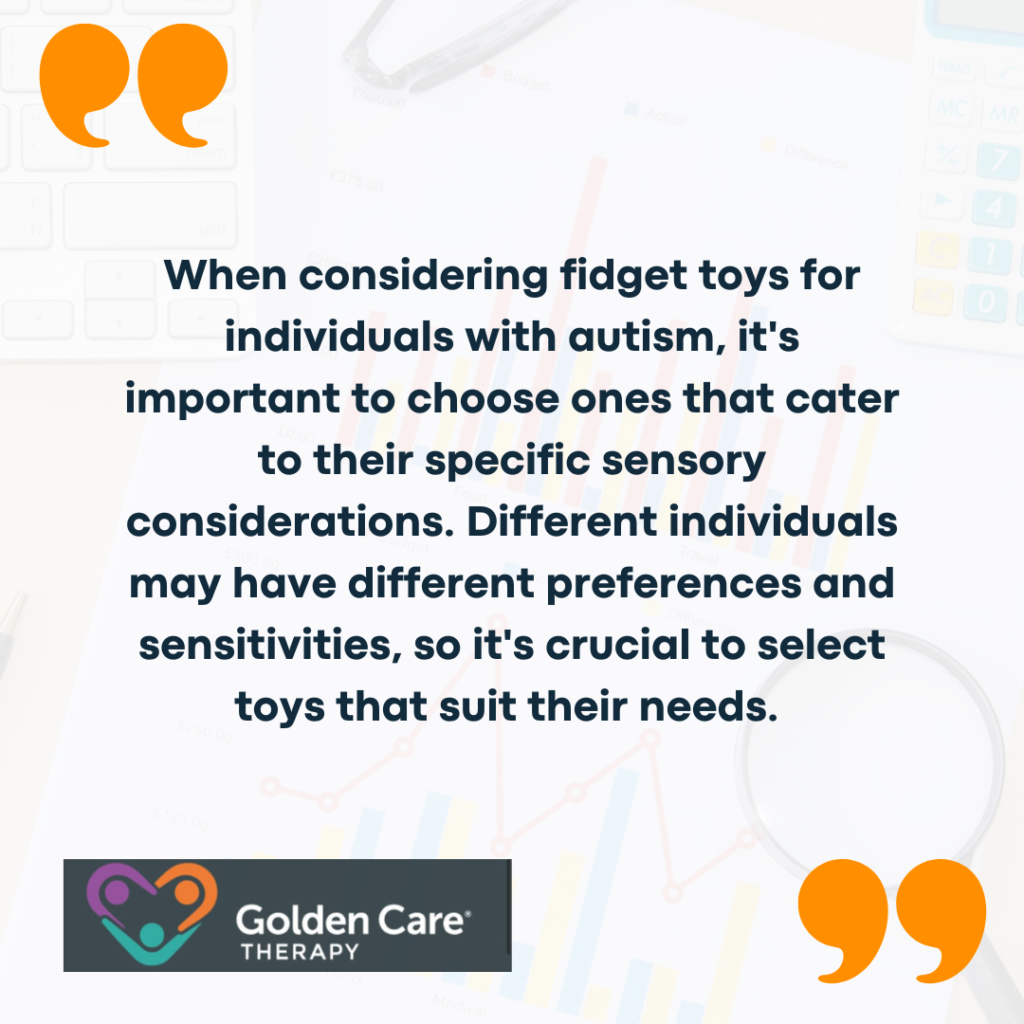Fidget toys have gained popularity in recent years for their potential benefits in assisting individuals with autism. These toys provide sensory stimulation and can help promote focus and calmness in those who use them. Occupational therapists often recommend fidget toys as a tool for self-regulation and sensory input management in individuals with autism.
Benefits of Fidget Toys
Fidget toys offer several benefits for individuals with autism. They can help improve focus and attention by providing a sensory outlet that allows individuals to filter out extraneous sensory information that might otherwise be distracting. By engaging with fidget toys, individuals with autism can redirect their attention and enhance their ability to concentrate on tasks at hand.
These toys also serve as a means of self-soothing and reducing anxiety. Many individuals with autism experience difficulties with sensory processing, and fidget toys provide a way to regulate sensory needs. By engaging with the tactile and sensory aspects of these toys, individuals with autism can receive feedback to their sensory systems and promote a sense of calmness.
Recommended by Occupational Therapists
Occupational therapists, who specialize in helping individuals develop skills for daily living and improve overall well-being, often recommend fidget toys as part of therapy for individuals with autism. These professionals understand the importance of sensory input management and the role it plays in promoting self-regulation and reducing hyperactivity. By incorporating fidget toys into therapy sessions, occupational therapists can assist individuals with autism in finding the right tools to meet their sensory needs.
It’s worth noting that the right fidget toys for children with autism are those that are carefully selected to match their specific sensory considerations. Occupational therapists take into account individual preferences and sensitivities when recommending fidget toys. By providing the appropriate sensory experience, these toys can help individuals with autism engage with their senses, regulate their sensory needs, and improve overall well-being.
In the following sections, we will explore different types of fidget toys and their therapeutic uses in more detail. By understanding the benefits of these toys and their recommended usage, parents and caregivers can make informed decisions about incorporating fidget toys into the lives of individuals with autism.

Sensory Toys for Autism
Individuals with autism often experience difficulties with sensory processing, which can impact their focus, calmness, and overall well-being. Fidget toys have emerged as valuable tools in helping individuals with autism manage these challenges and enhance their sensory experiences.
Improving Focus and Calmness
Fidget toys, such as fidget spinners and other tactile objects like textured balls, squishy toys, and stretchy fidgets, can provide sensory stimulation that aids in improving focus and promoting a sense of calmness. These toys offer individuals with autism a constructive outlet for their need for movement and sensory input, helping them redirect their attention and stay engaged.
By channeling their energy into manipulating fidget toys, individuals with autism can better regulate their sensory needs and maintain a higher level of focus. The sensory feedback provided by these toys can help filter out extra sensory information that might otherwise be distracting, enabling individuals to concentrate on tasks at hand. Occupational therapists often recommend fidget toys as a self-regulation technique for individuals with autism and other conditions, such as Attention Deficit Hyperactivity Disorder (ADHD).
Reducing Anxiety and Stress
Sensory toys, including fidget toys, are designed to provide relief in stressful or high-pressure situations. They offer a means of sensory engagement that can help individuals with autism reduce anxiety and stress levels. By interacting with fidget toys, individuals can divert their focus from sources of stress and nervous energy, allowing for a sense of relaxation and calmness.
The right fidget toys can cater to the specific sensory considerations and needs of children with autism, helping them remain calm, de-stress, and engage their focus. Sensory toys provide individuals with autism an opportunity to engage with their senses and receive feedback from their sensory systems. This engagement can be particularly beneficial for individuals with sensory processing issues, which are estimated to affect 65%–90% of people diagnosed with Autism Spectrum Disorder (ASD).
Incorporating fidget toys into the daily routine of individuals with autism can contribute to a more manageable and enjoyable sensory experience. These toys offer a tactile and interactive outlet that supports individuals in regulating their sensory needs, promoting focus, and reducing anxiety and stress levels.
Types of Fidget Toys
Fidget toys come in various shapes, sizes, and textures, offering a range of sensory experiences for individuals with autism. These toys can provide a means of self-regulation and promote focus and calmness. In this section, we will explore two types of fidget toys: rainmaker toys and sand and slime.
Rainmaker Toys
Rainmaker toys are popular fidget toys that offer both auditory and visual benefits. These toys are often colorful, with vibrant beads inside that create soothing rain sounds as they fall and dance. The gentle white noise-like sound produced by the rainmaker can be preferable for individuals who are overwhelmed by loud or intricate music with multiple sounds.
Rainmaker toys provide a captivating visual experience as well. Children can watch the beads inside the toy tumble and swirl, stimulating their visual senses. The combination of auditory and visual elements can create a calming effect and help individuals with autism focus their attention.
Sand and Slime
Sand and slime are tactile fidget toys that offer a unique sensory experience for individuals with autism. These toys are particularly beneficial for those who are intrigued by different touch sensations and enjoy exploring various textures.
Playing with sand or slime can be both relaxing and creative. The tactile experience of running fingers through the soft sand or squishing and stretching the slime can provide a soothing and satisfying sensory input. These toys allow individuals to engage with their sense of touch and explore new textures at their own pace, promoting sensory exploration and self-regulation.
By offering a varied sensory experience, sand and slime fidget toys can help individuals with autism engage their senses and provide feedback to their sensory systems. This can aid in regulating their sensory needs and promoting a sense of calmness and focus.

Therapeutic Uses of Fidget Toys
Fidget toys have gained recognition for their therapeutic uses, particularly in managing symptoms associated with conditions such as anxiety, attention-deficit hyperactivity disorder (ADHD), and autism spectrum disorder (ASD). Let’s explore how fidget toys can be effectively used in therapeutic settings to benefit individuals with autism.
Managing Symptoms
For individuals with autism, managing symptoms such as sensory overload, anxiety, and difficulty focusing can be a daily challenge. Fidget toys offer a helpful tool to address these symptoms and promote self-regulation.
By providing sensory stimulation, fidget toys allow individuals with autism to engage with their senses and receive feedback to their sensory systems. This can help them regulate their sensory needs and find a sense of calmness and focus. Fidget toys provide an outlet for sensory-seeking behaviors, redirecting their attention from potentially disruptive or self-injurious behaviors towards more appropriate sensory input.
The repetitive movements and tactile sensations offered by fidget toys can help individuals with autism channel their energy and reduce anxiety. Fidgeting can strike the perfect balance between boredom and sensory overload, providing low-level stimulation that keeps the brain active without overwhelming it. This, in turn, may benefit memory, focus, and overall cognitive function.
Balancing Stimulation for Autism
Autism is often characterized by atypical sensory processing, where individuals may be either hypo or hypersensitive to sensory input. Fidget toys can play a crucial role in balancing sensory stimulation for individuals with autism.
For individuals who are hyposensitive, fidget toys provide additional sensory input that helps to increase their overall level of arousal and engagement. By engaging with fidget toys, these individuals can experience increased focus, alertness, and improved sensory processing.
On the other hand, individuals who are hypersensitive may find certain sensory experiences overwhelming and distressing. Fidget toys can act as a form of desensitization, gradually introducing sensory input in a controlled and manageable way. Over time, exposure to fidget toys can help individuals with hypersensitivity become more comfortable and less reactive to various sensory stimuli in their environment.
It’s important to note that the effectiveness of fidget toys may vary for each individual with autism. Occupational therapists and other professionals specializing in autism often recommend and customize the use of fidget toys based on the specific needs and preferences of the individual.

Sensory Processing in Autism
Individuals with autism often experience sensory processing issues that can significantly impact their daily lives. Sensory processing disorder (SPD) is estimated to affect up to 90% of people with ASD These sensory challenges can manifest in various ways and may result in difficulties with self-care, anxiety, and challenges integrating into the school environment.
Impact on Daily Life
Sensory processing issues can have a profound impact on the daily lives of individuals with autism. The sensory stimuli they encounter, such as sounds, lights, textures, and smells, may be overwhelming or distressing. This can lead to sensory overload, causing anxiety, meltdowns, and difficulties in focusing and self-regulation. Simple activities like getting dressed, eating, or participating in social interactions can become overwhelming and challenging.
Occupational Therapy Interventions
Occupational therapists (OTs) play a crucial role in helping individuals with autism manage their sensory processing difficulties. They employ sensory-based interventions, such as sensory integration therapy (SIT) and sensory-based strategies, to address and regulate sensory processing issues.
Sensory integration therapy focuses on providing individuals with autism structured and repetitive sensory experiences in a controlled environment. The goal is to help them process and respond to sensory information more effectively, leading to improved self-regulation and overall functioning.
In addition to therapy sessions, occupational therapists work closely with individuals with autism and their families to develop strategies and accommodations that support sensory needs at home, school, or in community settings. These interventions may involve creating sensory-friendly environments, incorporating sensory breaks, and introducing sensory tools such as fidget toys.
While sensory-based interventions, including the use of fidget toys, are frequently suggested by occupational therapists, it is important to note that the effectiveness of these interventions in managing sensory symptoms associated with ASD is still uncertain. While some parents have reported positive experiences with sensory-based interventions, there is a lack of scientific evidence to fully support their effectiveness.
As research continues to expand in the field of sensory processing and autism, it is crucial to further investigate and understand the impact of sensory-based interventions on individuals with autism. By gaining a deeper understanding of how sensory processing affects individuals with autism, we can continue to develop effective strategies and support systems to enhance their daily lives.
Research continues to shed light on the neurological basis of sensory issues in autism, offering hope for more targeted and effective therapies in the future. By recognizing and addressing sensory processing difficulties, we can improve the quality of life for individuals with autism and their families. If you’re seeking specialized ABA therapy in New Jersey, Indiana, Georgia, and New York, Golden Care offers comprehensive services tailored to meet the unique needs of each individual. Contact us to learn more or book a consultation today.
Sources:


